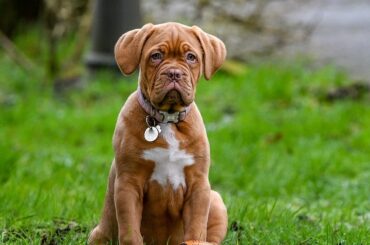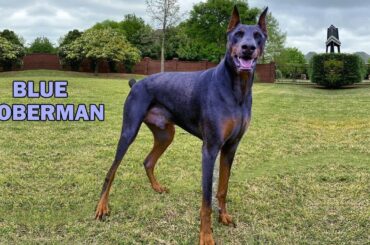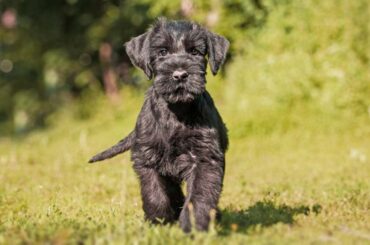Table of Contents
An Exploration of a Rare and Remarkable Breed
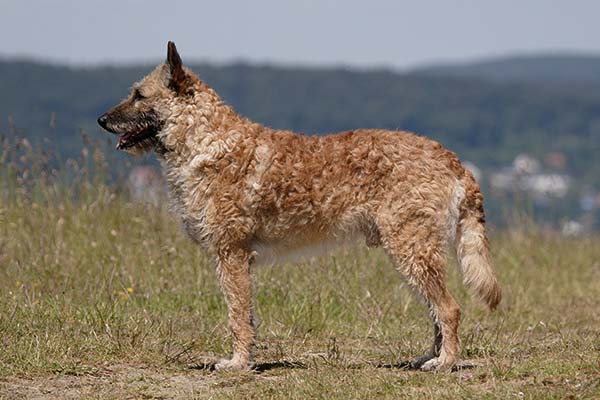
Nestled within the rich tapestry of dog breeds, the Belgian Laekenois stands as a distinctive and often overlooked gem. With its elegant coat, keen intelligence, and unwavering loyalty, this herding breed has carved out a unique niche in the world of canine companionship.
As we embark on a journey to understand and appreciate the Belgian Laekenois, we’ll delve into the breed’s history, unravel the intricacies of its physical and temperamental characteristics, and explore the role it plays in contemporary society.
History of the Belgian Laekenois
The Belgian Laekenois breed has its origins in Belgium and was developed centuries ago among a collection of traditional herding breeds. These canines looked out for animals, particularly sheep and cattle. They relished the company and close cooperation of their families at the same time. This led to the development of this Belgian shepherd into a competent working dog and an attentive protector of people and property.
The four primary varieties of Belgian shepherds were initially recognized in the 1890s: the Tervuren, the Groenendael (also known as the Belgian sheepdog), the Malinois, and the Laekenois. The defining characteristic for each variety was coat, yet it should be emphasized that the four types were fairly similar in stature and temperament.
The Belgian Laekenois’s wiry, curly coat gained it notoriety. The town of Laeken, which is situated in an area strongly connected to this breed, is said to have served as the inspiration for the name, according to the national breed club. Aside from guarding cattle, the Laekenois breed was also interestingly employed in the unique task of watching over linen that was drying in the field.
Following World Wars I and II, the Laekenois and other Belgian shepherd populations were all but wiped out, just like many other European dogs. The Laekenois is still extremely rare, but breed aficionados have worked hard to preserve unique Belgian bloodlines, and the breed has gradually seen a resurgence.
After being brought to the United States, the Laekenois, like many other imported dog breeds, attracted a fervent and committed fan base of breeders, exhibitors, and owners. The American Belgian Laekenois Association was established in 1995. The breed was allowed to compete in the Companion group in 1998 after it joined the AKC’s Foundation Stock Service. On July 1, 2020, it was fully recognized in the Herding group after being categorized in the Miscellaneous group in 2005.
Distinctive Physical Features of the Belgian Laekenois
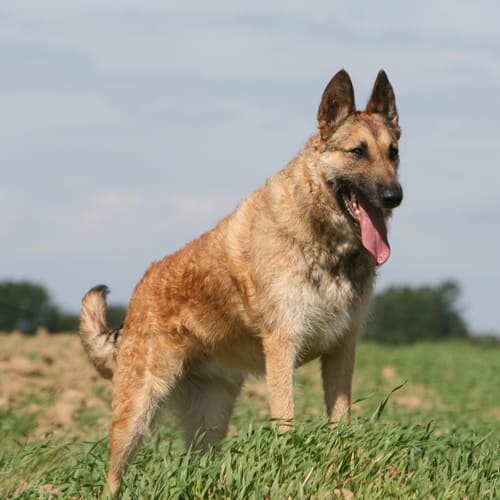
The Belgian Laekenois is distinguished by several distinctive physical features that set it apart from other breeds, particularly among the Belgian Shepherd varieties.
- The Belgian Laekenois is renowned for its unique coat texture, which is rough, harsh, and wiry. The coat should form a tousled look without curls or waves. The breed typically has a dense undercoat that provides insulation, especially in colder weather.
- The Laekenois comes in a range of colors, with the most common being fawn with overlay, meaning a mixture of fawn and gray or black hairs. The coat may also include a black mask. Other acceptable colors include red, gray, and agouti. A small amount of white on the chest or toes is permissible but should not dominate the coat.
- The Belgian Laekenois is a medium-sized dog with a well-proportioned and athletic build. Males typically stand between 24 to 26 inches (61 to 66 cm) at the shoulder, while females are slightly smaller, ranging from 22 to 24 inches (56 to 61 cm).
- The breed boasts a refined head with a flat skull and a well-defined stop. The ears are erect and triangular, adding to the breed’s alert and attentive expression.
- The Belgian Laekenois is characterized by almond-shaped, dark brown eyes that convey intelligence and alertness while the tail is set high and is carried low at rest. It should have a slight curve and can be straight or slightly curved upward when the dog is alert or in motion.
- The breed exhibits an efficient and tireless gait, reflecting its heritage as a herding and working dog. Movement should be free and fluid.
Personality
The Belgian Laekenois is an intelligent and watchful dog that is cautious around strangers and suspicious behavior. They are the epitome of what a herding and security dog ought to be. The Laekenois needs a committed owner with whom to build a strong alliance. They are a canine that is willing to follow instructions from a handler but also capable of making their own judgments.
The Belgian Laekenois is devoted and loving to close family members, but it takes time for it to get along with strangers. It also isn’t very patient or understanding when handled roughly or harshly. Of the four Belgian Shepherd breeds, they sometimes give the impression of being the “softest” or least intense, but everything is subjective!
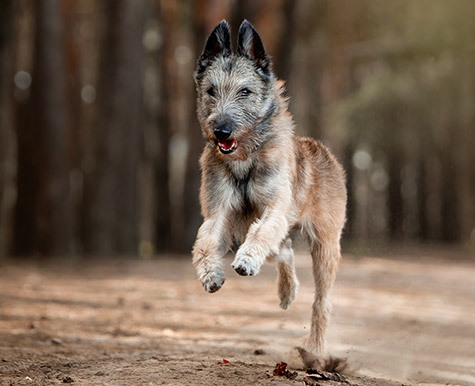
Historical and Modern-day Working Roles of the Belgian Laekenois
Historical Working Roles
The Belgian Laekenois has its roots as a herding dog, and historically, it played a crucial role in helping shepherds manage and move livestock. Their agility, intelligence, and natural herding instincts made them well-suited for guiding and protecting flocks.
Beyond herding, Laekenois were often employed as guard dogs. Their innate alertness and protective instincts made them valuable assets for protecting both livestock and property.
Belgian Laekenois were versatile working dogs on farms, assisting with various tasks. They could be trained to pull carts, carry loads, and perform other duties around the farmstead. During World War I and World War II, Laekenois, along with other Belgian Shepherd varieties, were utilized as messenger dogs. Their intelligence and ability to navigate difficult terrain made them valuable in military operations.
Due to their keen sense of smell and trainability, Belgian Laekenois have been employed in search and rescue operations, locating missing persons in challenging environments.
Modern-Day Working Roles
Belgian Laekenois continue to serve in police and military roles around the world. Their intelligence, agility, and trainability make them well-suited for tasks such as search and detection, tracking, and protection.
In modern search and rescue operations, Belgian Laekenois are often trained to locate missing individuals in disaster-stricken areas. Their agility and determination make them valuable assets in challenging conditions. Some Laekenois are trained as therapy dogs, providing comfort and companionship in various settings, including hospitals and nursing homes. They may also be used as assistance dogs for individuals with specific needs.
Belgian Laekenois excel in various dog sports and competitions. Their athleticism, intelligence, and versatility make them successful participants in activities such as obedience trials, agility competitions, and herding trials.
Lastly, while their working instincts are strong, many Belgian Laekenois also thrive as beloved family pets. Their loyalty, intelligence, and affectionate nature make them excellent companions for active families who can provide the mental and physical stimulation they need.
5 Effective Training Techniques for the Belgian Laekenois

Early Socialization
Early socialization is crucial for the Belgian Laekenois, as it lays the foundation for a well-adjusted and confident adult dog. Socialization involves exposing the puppy to a variety of people, environments, stimuli, and experiences during the critical developmental period, typically between 3 and 14 weeks of age.
Positive Reinforcement
Treats, compliments, and play are examples of positive reinforcement strategies. Reward-based learning motivates Belgian Laekenois to learn and exhibit desired behaviors, and they respond well to them.
Obedience Training
Sign up for classes on basic obedience for your Laekenois. In addition to helping establish a foundation of fundamental commands like sit, stay, come, and leash manners, these sessions offer structured training situations.
Channel Instincts
Acknowledge and channel their herding instincts. Activities such as agility, herding trials, or obedience competitions allow them to use their natural abilities in a controlled and positive way.
Use Varied Environments
Train your Belgian Laekenois in different environments to generalize commands. This helps them understand that commands apply in various situations, not just at home or in a specific training area.
Breed Preservation Challenges
Preserving the Belgian Laekenois as a distinct breed comes with its own set of challenges and concerns, which are common to many rare or less-popular breeds. Some of these challenges include:
Low Population Numbers
The Belgian Laekenois is one of the less common varieties among the Belgian Shepherd breeds. Low population numbers can lead to a limited gene pool, increasing the risk of genetic disorders and reducing overall breed vitality.
Genetic Diversity
With a smaller population, maintaining genetic diversity becomes challenging. Inbreeding can lead to the concentration of genetic defects and health issues within the breed.
Limited Recognition and Awareness
Despite being one of the four recognized Belgian Shepherd varieties, the Belgian Laekenois may still be less known compared to other breeds. Limited recognition and awareness can result in fewer responsible breeders and a smaller community dedicated to the breed’s preservation.
Breeding Practices
Ensuring responsible breeding practices is crucial for preserving the breed’s health and integrity. The lack of awareness or adherence to breeding standards may result in undesirable traits being propagated.
Health Concerns
The Laekenois is considered to be relatively healthy. However, as a large breed dog, there are a few problems that the Laekenois should be screened for. It may be prone to certain health issues such as hip and elbow dysplasia, eye conditions, thyroid issues and other allergies.
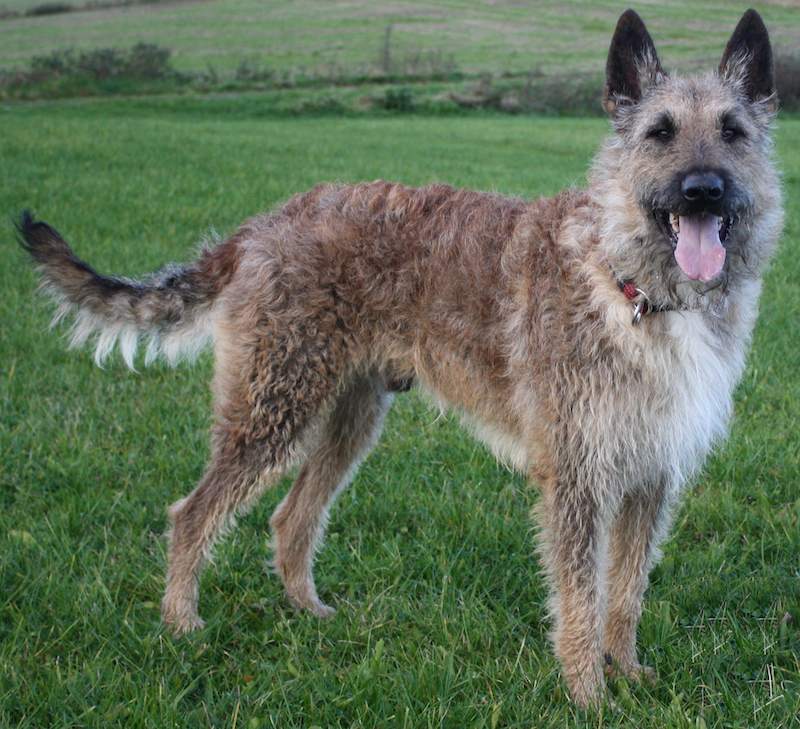
Belgian Laekenois Care
Regular veterinary checkups are essential for the health and well-being of your Belgian Laekenois, as they allow for the early identification of potential health problems. Your veterinarian can help you create a regimen for your Laekenois’s care that will enhance its pleasure and well-being. Because this breed is prone to gaining weight from a sedentary lifestyle, it is advised to walk them for 30 to 60 minutes every day in addition to taking shorter walks throughout the day and engaging them in active play. It’s imperative to clean their ears according to your veterinarian’s instructions and to look for debris and bugs. Regular nail trimming will keep their toenails from clicking against the ground.
Conclusion
The Belgian Laekenois stands as a unique and versatile breed with a rich history and a distinctive set of qualities. From its roots as a herding dog in Belgium to its modern roles in various capacities, the Laekenois showcases intelligence, agility, and loyalty. As a herding breed, it has successfully adapted to contemporary society, proving its worth in roles such as police work, search and rescue, and even as a cherished family companion.
The Laekenois’s distinctive coat, coupled with its attentive expression, adds to its allure. However, the breed’s uniqueness also brings about challenges, including the need for responsible breeding practices, ongoing efforts for recognition, and the prevention of potential health issues.
READ ALSO
- Black Irish Setter Dog: Discovering the 4 Comprehensive Coal Beauty of the Setter Breed
- Jagdterrier Dog Breed Information – 6 Superb Physical Characteristics And Facts
- Fluffy French Bulldog Breed Information, History, 6 Comprehensive Body Characteristics, Behavior And Caring
- Billy Dog Breed Information, Pictures, Characteristics – 3 Amazing Known Facts
- Giant Schnauzer Dog – 4 Exclusive Body Characteristics, Behaviour, Caring And Health
FAQs
Is the Belgian Laekenois rare?
Of the four closely related Belgian herders, the Belgian Sheepdog, Malinois, Tervuren, and Laekenois, the Laekenois is the rarest. This strong and sturdy dog is distinguished from his brethren by a rough, tousled coat that comes in shades of red or fawn or in grayish tones.
What is the history of the Belgian Laekenois?
The Belgian Laekenois’ name is a tribute to the town of Laeken, where the breed originated. These dependable pups initially worked as guard dogs, protecting everything from flocks in the field to linens hanging on the line to dry. Later, they served as messenger dogs in World Wars I and II.
How many Belgian Laekenois are in the US?
Not only is the Belgian Laekenois (Laeken) a virtual unknown – although it has been in the AKC’s Miscellaneous Class since 2011 – it’s rare, too, with only about 200 nationwide and less than 400 in the United States since 1995.1

